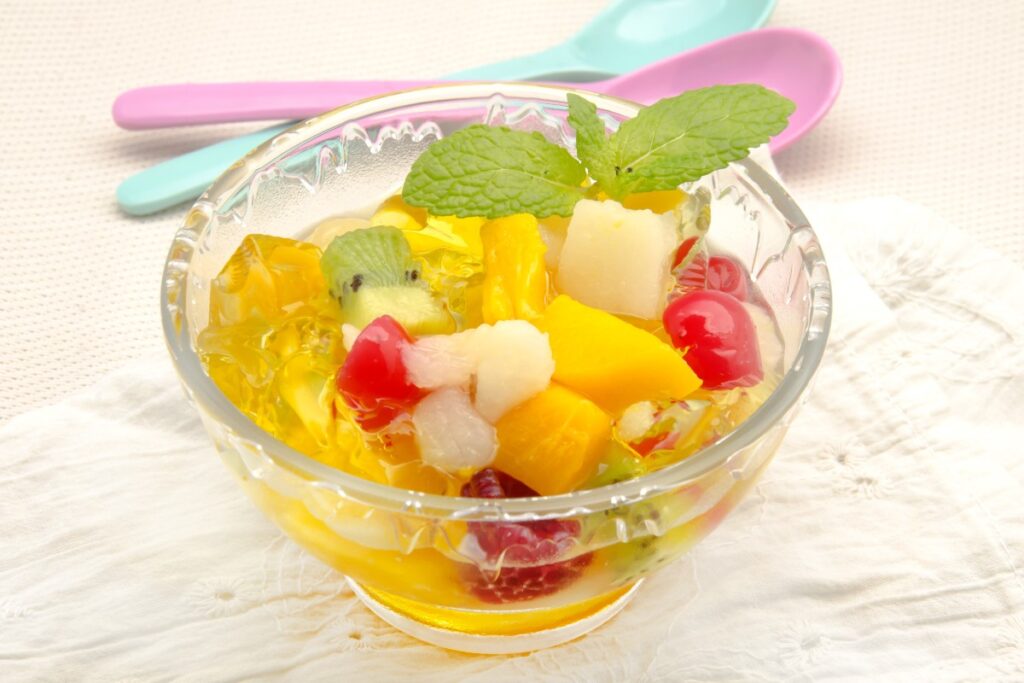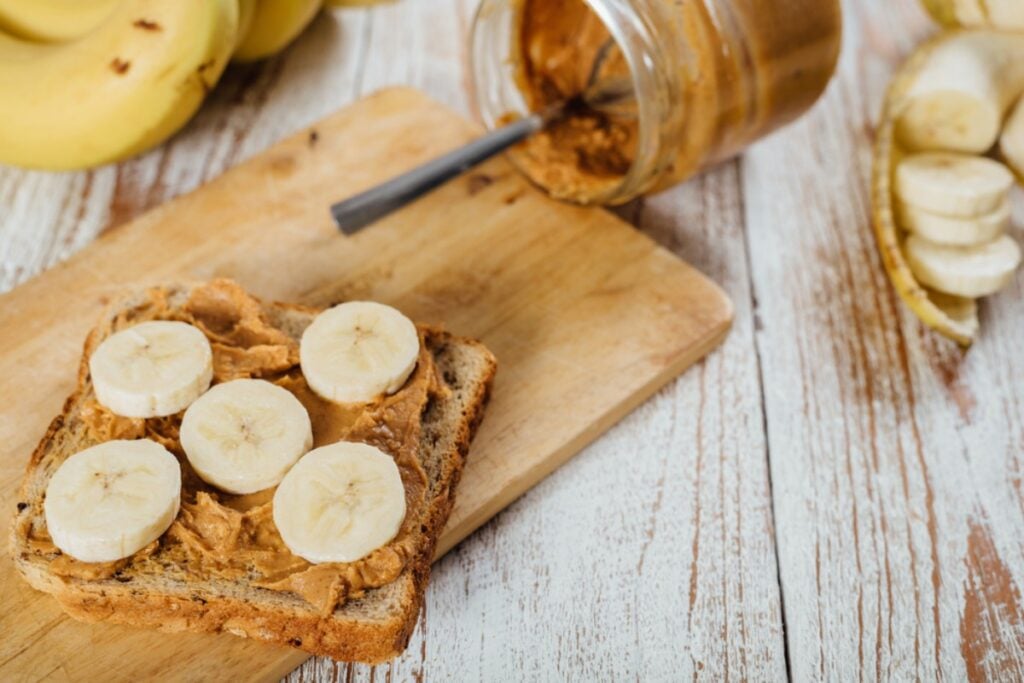10 Everyday Foods People Ate in the 1950s That Kids Would Refuse Today – Surprising Tastes from the Past
Ever wondered what your grandparents ate when they were kids? The foods that filled 1950s kitchens might look pretty strange to kids today.
Many meals from that era were built around ingredients and flavors that just aren’t as common now. If you were to serve up some of these old-school dishes, you might get a few surprised looks.
Jell-O with fruit chunks

Jell-O with fruit chunks was a staple at family dinners and potlucks in the 1950s. Flavored gelatin mixed with canned fruit like peaches or fruit cocktail made for a colorful and wobbly treat.
Kids today might be puzzled by the texture of fruit pieces floating in Jell-O. Many prefer desserts that are smooth and less unusual in texture.
Back then, this dessert was easy to prepare and felt festive on the table. It was a simple way to combine fruit and dessert.
Spam sandwiches
Spam sandwiches were a common lunch in the 1950s. Slices of canned meat were tucked between white bread, sometimes with mayo or mustard.
Spam was popular because it was affordable and didn’t need refrigeration. It was a quick fix for busy families and even showed up in school lunches.
Kids now often turn up their noses at canned meat in a sandwich. The idea just doesn’t have the same appeal.
Liver and onions

Liver and onions was a regular dinner in many homes. Parents saw it as a healthy, iron-rich meal.
The liver was usually sliced, coated in flour, and fried with caramelized onions. Some families soaked the liver in buttermilk or added bacon for more flavor.
Today, the strong taste and unique texture make this dish a tough sell for kids. Liver and onions is rarely seen on modern dinner tables.
Meatloaf with ketchup glaze
Meatloaf was a classic dinner that filled up hungry families. Ground beef mixed with breadcrumbs, onions, and seasonings made for a simple meal.
The ketchup glaze on top was the signature finish. A mixture of ketchup, brown sugar, and mustard caramelized as it baked, giving a sweet and tangy crust.
Kids today often want lighter or fresher meals. Meatloaf with ketchup glaze doesn’t show up on as many dinner tables anymore.
Deviled eggs

Deviled eggs were a party favorite in the 1950s. Hard-boiled eggs were filled with a creamy mix of yolks, mayo, mustard, and seasoning.
A sprinkle of paprika on top added color and a little kick. They were easy to eat by hand at picnics and gatherings.
Kids now might find deviled eggs too rich or tangy. Many prefer snacks that are sweeter or have a milder flavor.
Canned creamed corn
Canned creamed corn was a go-to side dish in the 1950s. Families kept cans in the pantry for quick meals, especially when fresh vegetables weren’t available.
The texture is soft and sweet, quite different from fresh corn. It was often used in casseroles or served with meat and potatoes.
Kids now might not love the thick, sometimes slimy texture. Fresh or frozen corn is much more popular in most homes.
Gelatin salads

Gelatin salads, often called Jell-O salads, were all the rage in the 1950s. They combined flavored gelatin with fruit, vegetables, or even meat.
Having a refrigerator was a big deal, and gelatin salads were a way to show off modern kitchen skills. The mix of sweet and savory flavors was surprisingly common.
These salads also helped stretch meals and keep leftovers fresh. They were practical during tough times.
Most kids today would probably skip a gelatin salad with vegetables or meat. But at a family reunion, you might spot one as a nod to the past.
Pickled pig’s feet
Pickled pig’s feet were a familiar snack, especially in the South. They were sold in jars at the grocery store and served at gatherings.
The vinegar and spices gave them a strong, tangy flavor. Eating every part of the animal was normal and helped avoid waste.
Trying pickled pig’s feet today would be a big leap for most kids. The flavor and texture are a world away from what they’re used to.
Lime Jell-O shots
Lime Jell-O was a party staple in the 1950s, often made with quirky add-ins like onions or mayonnaise. The bright green color made it stand out on any table.
Kids might have been curious about the wiggly texture but not so thrilled with the unusual flavors. Mixing sweet and savory in Jell-O was a trend back then.
Today, Jell-O is mostly just a dessert. The creative combinations of the past are mostly gone from modern recipes.
Peanut butter and banana sandwiches

Peanut butter and banana sandwiches were a simple favorite. Creamy peanut butter paired with sweet banana slices made for a quick snack.
Some people even fried the sandwich for a warm, gooey treat. Elvis Presley famously liked his with crispy bacon for a salty twist.
Kids now might think peanut butter and banana is a weird combo. With so many new sandwich options, this classic is less common but still packs plenty of flavor.
Why 1950s Food Choices Confuse Modern Kids
Many foods from the 1950s seem odd to kids today. The flavors, textures, and ingredients just aren’t what they’re used to.
Kids now have access to fresher ingredients and simpler flavors. Meals from the past often featured heavy or gelatinous dishes that just aren’t as popular anymore.
Processed foods, sugar, and preservatives were everywhere in the 1950s. That shaped the way families ate and what kids expected at mealtime.
Influence of Food Technology in the 1950s
The rise of convenience foods changed everything. TV dinners, canned goods, and boxed mixes made meals quick and easy.
Artificial ingredients and preservatives kept food fresh but also changed flavors and textures. Kids today rarely encounter those same combinations.
Modern meals focus on fresh, natural ingredients. That makes the old-school dishes seem complicated or just plain weird by comparison.
How Family Meals Have Changed Since the 1950s

Family meals used to be all about tradition and convenience. Now, nutrition and busy schedules play a bigger role in what and how you eat.
In the 1950s, processed foods and canned veggies were the norm. Meals were quick to prepare and lasted longer.
Today, there’s more focus on fresh fruits, vegetables, and lean proteins. Families are careful about sugar and artificial ingredients.
Many schools teach kids about balanced diets. Eating habits have changed a lot, and so have the foods that end up on your table.
Evolving Eating Habits Across Generations
Think about the last time your whole family sat down together for dinner. Maybe it happens every night, or maybe it feels almost impossible with everyone’s busy schedules.
Not long ago, family dinners were a daily routine. Moms often cooked while dads joined after work.
Eating out was rare, and grabbing food on the go just didn’t happen much. Today, it’s common to see families eating at different times or even in separate rooms.
Busy days mean more takeout and ready-made meals. Technology like smartphones can pull everyone’s attention away from the table.
Family structures have also shifted. Step-parents and blended families may bring new food traditions and routines.
Whether your family eats together every night or just once in a while, sharing food still plays a big part in how we connect.







